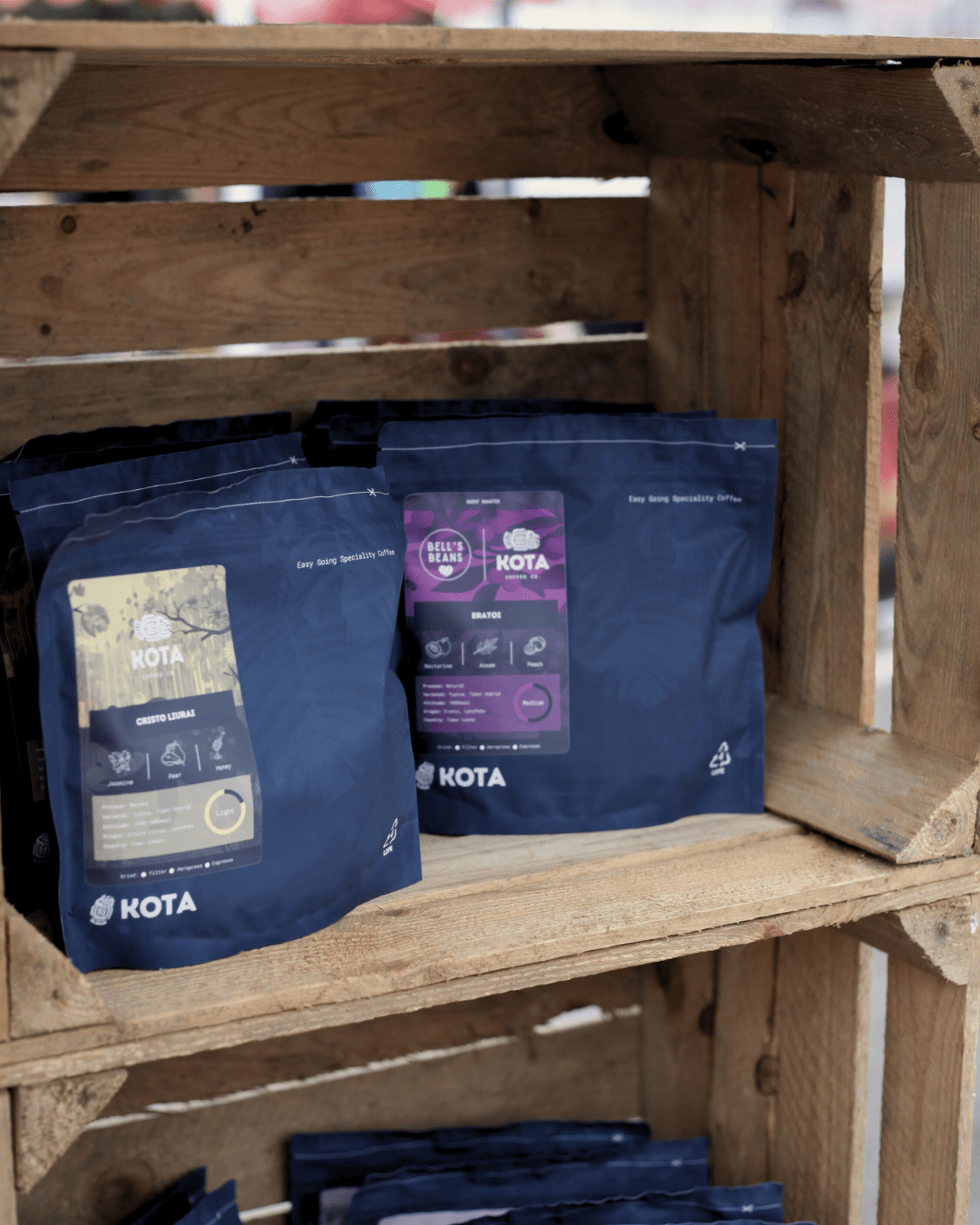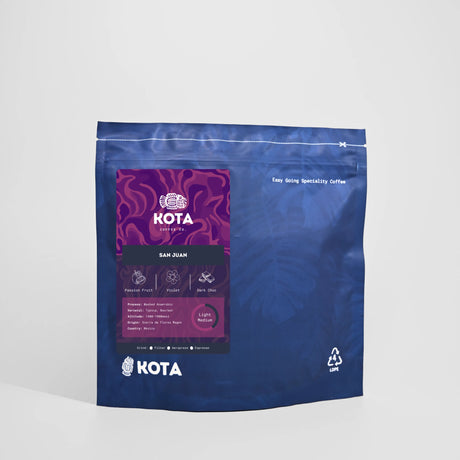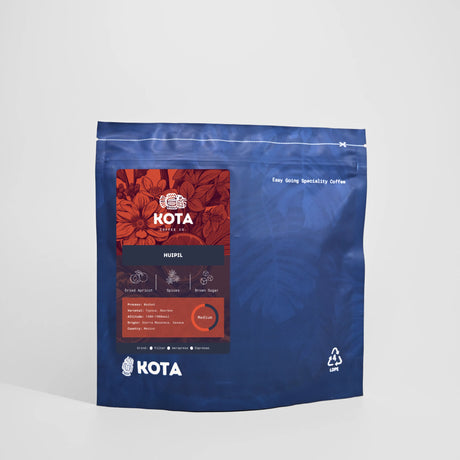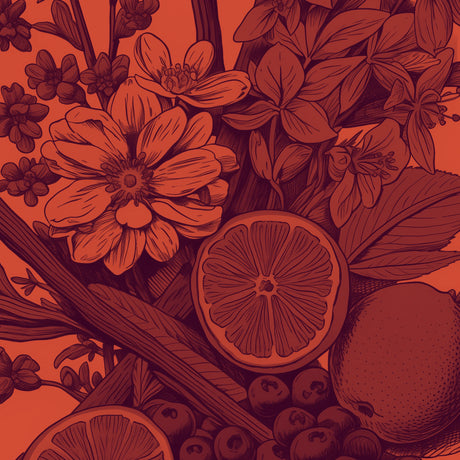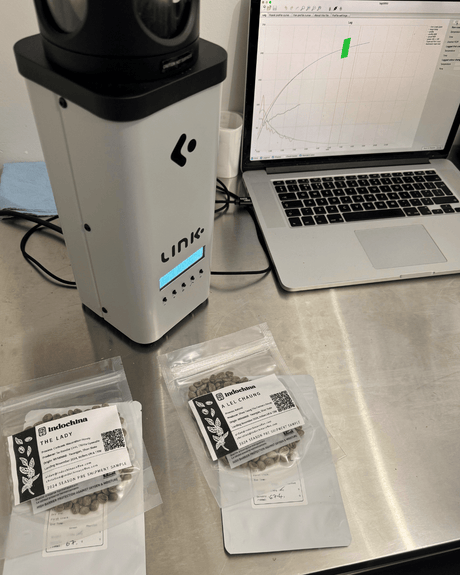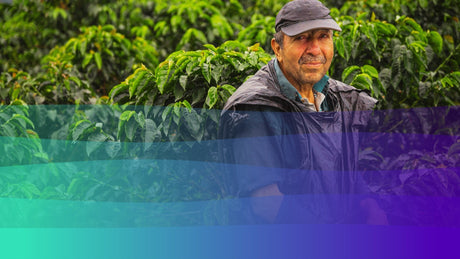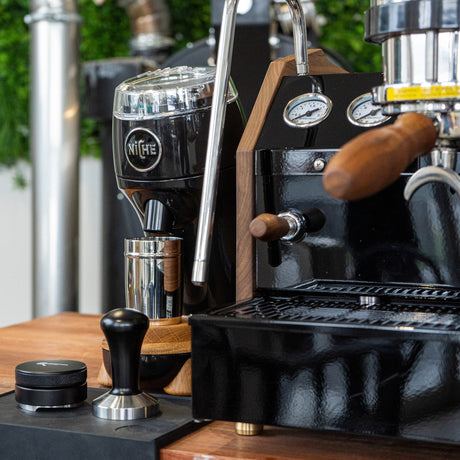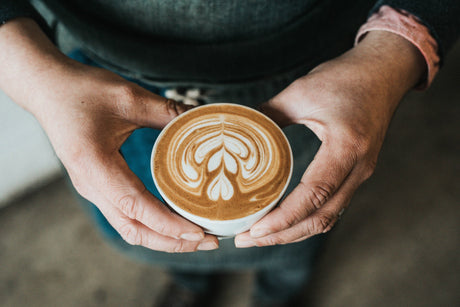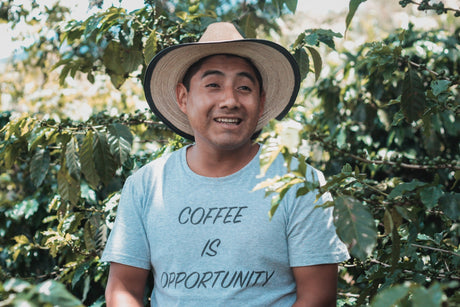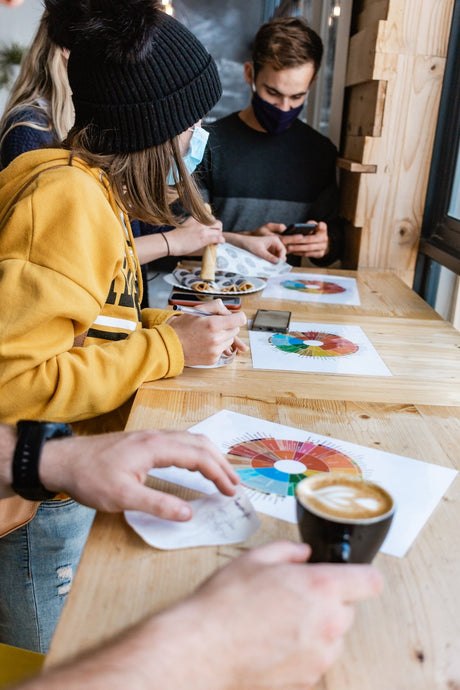When you think of pour over brewing, we’re almost certain that you’re thinking of brewing a single origin coffee, and that makes total sense. Pour over brewing brings clarity to your cup of coffee and allows you to really taste the delicate, unaltered taste of an origin. Single origins are utterly fantastic for avid coffee drinkers because they showcase the unique characteristics of an origin country, farm, or even singular lot. Not to mention they also show the impact of soil, climate, and altitude on the taste of the coffee bean. By drinking single origin coffee, you can really come to broaden your coffee knowledge as you start to learn about the commonalities between different locations and the tastes that coffees from there will produce.
Here at KOTA, we are all for single origin brewing because we roast all our coffees to showcase the incredible flavours of each origin when they’re brewed by themselves. We work with farms to share their stories and their work, so want to encourage everyone to try our roasting of their origins and celebrate their work that allow us to bring you coffee every day.
However, that isn’t to say that we don’t think there is also something to say about taking these tasted single origins and taking a moment to learn more about flavour profile building and development by building at-home blends. When you start thinking further about how different origins might share flavours and how these could be enhanced by adding additional, complimentary flavour notes, you elevate your coffee game because you’re now taking the knowledge of single origins you have and are applying them to a broader knowledge of flavour.
Today, we’re going to share with you the easy steps to developing a pour over blend of your own. What’s fantastic about at-home blend development is that you’re going to come away from the coffee bar with an individual cup of coffee that is exactly how you want it to taste. As you’ll soon see, the possibilities are endless…
Selecting your origins
In theory, any two coffees could be blended. You might not necessarily get the most delicious tasting cup of coffee at the end because you run the risk of lots of tastes muddying together, but it is very much doable.
We want to encourage you to start blend development by picking two origins. First looking at the flavour notes of each single origin. Perhaps origin A has very textbook tastes of cocoa and hazelnut – you might think that it’s a delicious coffee, but it’d be nice if you could get some fruitier tastes coming through to compliment the chocolatey tastes. You therefore would look through your brew bar line up and select a coffee with fruit tasting notes – this is origin B. In our case, we’ve picked an origin which has notes of redcurrant and pear.
Essentially, you need to select two origins which have flavours that you can envision coming together nicely. This links back to our first point that in theory you could use any two origins as it all comes down to personal preference. Learning to pair flavours is a bit of trial and error, so don’t worry if you don’t pick a perfect pairing first time.
The process
When brewing with a blend, the most important thing to do is map out a recipe plan. This begins the same as any other brewing you do – you need to work out exactly what brew method you are going to follow.
We recommend using a 15g – 250ml V60 recipe because we see it as a reliable starting point for any origin. Personally, we do 5 lots of 50g pours spread evenly over 30 second intervals, but brew however you like to normally brew. The main thing to focus on is your total dose going into the brew, so for us at KOTA today that is going to be 15g.
Note: The rest of this blog refers to 15g as the whole dose, so if you are choosing to use a different total figure, you will need to calculate your ratio accordingly by converting the weights from our 15g.
Now that you know your dose, it’s time to start working out the ratio of your blend. This just means working out how much of each origin is going to make up your total 15g dose of coffee.
Read the flavour notes of your two origins, which one do you want to be more prominent in the cup? With the above example we gave, we said we wanted to have a chocolate tasting coffee but with a hint of red berries coming through. Because of that, we are going to use origin A as the main component of the blend, and use origin B to ‘top us up’ to 15g.
For the purpose of ease, we suggest working in whole grams only to begin with. Of course you could start working to the tenth of a gram, but in the early stages of fine-tuning a blend, this isn’t needed.
As a starting point, use 10g of the main component origin (A), and 5g of the ‘top up’ origin (B). This means that for every 1g of origin B we use, we are using 2g of origin A.
Brew
This bit is over to you! Brew however you like to brew your pour over coffees. As we said, we are using a 15g - 250ml recipe, pouring 50ml of water every 30 seconds. We expect a total brew time of 3m15 - 3m30.
Assessment
How did your coffee taste? Take a moment to write down your notes about your brew. Did you think that you got a balance of both tastes through the cup, or was one overpowering the other?
This is where experimentation comes to the fore with blend development because you now get to hatch a plan for recipe variation 2.
With our example of the chocolate origin (A) and the berry origin (B), we found that although there were some hints of fruit in the cup, it still tasted very chocolatey. We are therefore going to make a recipe variation which has a bit more of the berry origin (B) than before. A reminder, we’re going to work in whole grams for ease! In the coffee world, 1g of coffee makes a surprisingly large difference, so for variation 2, we are going to go to 9g origin A, and 6g origin B. Then it’s time to brew again.
The key to recipe development for blends at home is to change 1g at a time, and always make sure that your total g is adding back up to your overall dose (15g). Once you’ve tried your second recipe variation, you’ll know if you’re heading in the right direction – at this point, it’s over to you. You might want to change more, start working with 1/2 grams, go back to the first recipe or change the ratio entirely. Blend development is all about experimenting and trying many different things! We therefore love to keep a notebook full of all our findings, so we don’t get too lost amidst several different recipe variations.
Take a moment to look at our Timor Leste brewing bundle here! It's an excellent choice for exploring the flavours of Timor Leste, and offers you two fantastic origins which can also be used for brewing your very own bespoke Timor Leste blend.
If you're wanting to buy multiple origins and try blending, we recommend taking advantage of our brewing bundles here.
